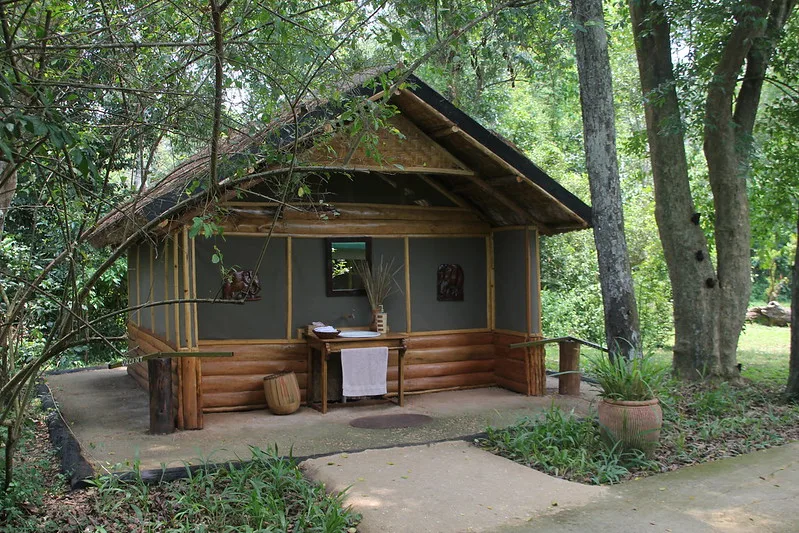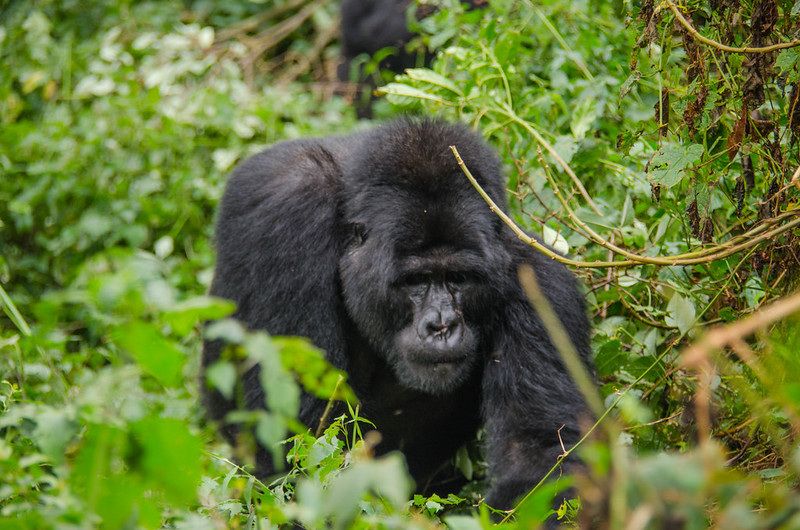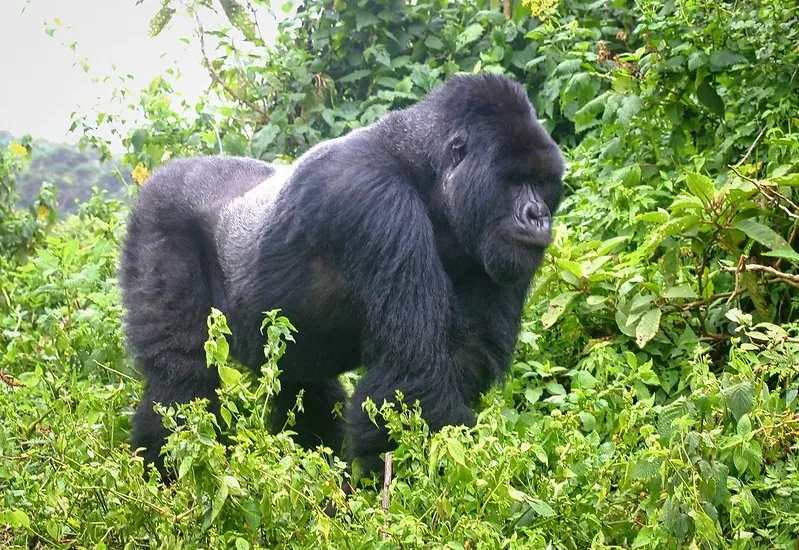Vous êtes bienvenus, aventuriers courageux, dans les merveilles sauvages de l'Ouganda, où l'appel de la…
Lakes of Uganda
Lakes of Ugandan Overview
Uganda is part of the African Great Lakes region, and open water or marsh areas cover about a quarter of its geographical area. The lakes of Uganda are vital to the country’s biodiversity and economy, but their future is jeopardized by environmental challenges.
The African Great Lakes region encompasses Burundi, the Democratic Republic of the Congo, Kenya, Malawi, Rwanda, and Tanzania, as well as the nations that surround the African Great Lakes.
Uganda is home to three of Africa’s Great Lakes: Lake Victoria, Lake Albert, and Lake Edward. These lakes all drain into the White Nile, one of the Nile’s two main tributaries. The Nile basin encompasses about all of Uganda’s land area.
The Albert Lake
Lake Albert is the second biggest lake in Uganda and the seventh largest in Africa, located on the border between Uganda and the Democratic Republic of the Congo. The lake has a surface area of 5,300km2 with a maximum length and breadth of 160km and 30km, respectively.
From African softshell turtles to Uganda kob antelopes, Lake Albert is home to a diverse assortment of animals. There are 55 fish species in the lake, including the native Nile perch, which is an invasive species in Lake Victoria.
Albert is also home to a variety of waterbirds, including the elusive Shoebill.
Lake Albert is an excellent stopover between Murchison Falls National Park and Kampala or Entebbe.
Visitors may explore the adjacent Kabwoya Wildlife Reserve for wildlife drives and fossil searching, or they can visit the local fishing hamlet and take in the breathtaking vistas.
Lake George
Lake George, located in southeastern Uganda, is a small lake with an average depth of around 2.4 meters. The lake is located in the western portion of the Great Rift Valley and was named after King George V by explorer Henry M. Stanley.
Lake George covers 250 square kilometers and is fed by several rivers and streams that come down from the Rwenzori Mountains.
The Kazinga Channel connects Lake George to its bigger neighbor, Lake Edward. The Queen Elizabeth National Park’s main feature is this 32-kilometer-long freshwater canal. It has one of the world’s highest densities of hippos (around 2,000).
Lake George is bordered by wetland grass, which is home to a variety of fauna, including over 150 bird species. The marshes are home to a variety of species, including the Sitatunga antelope and elephant.
Many fish species live in Lake George, including the Nile tilapia and the Haplochromis, and it is home to numerous fishing towns.
The Mburo Lake
Lake Mburo National Park is located in the Kiruhura District of Uganda’s Western Region, about equidistant from Bwindi Impenetrable National Park and Entebbe.
Lake Mburo (13km2) is the largest of Lake Mburo National Park’s five lakes. Lake Mburo, along with 13 other lakes in the vicinity, is part of a 50-kilometer-long wetland system.
Lake Mburo National Park is 260km2 in size, with wetland ecosystems such as lakes and marshes accounting for 20% of the park’s surface area. Other diverse ecosystems in the park include grassland and acacia forest.
The park is home to 68 animal species, several of which are indigenous. The beautiful impala can only be seen at Lake Mburo National Park in Uganda.
Lake Mburo National Park, along with Kidepo Valley National Park, is one of two Ugandan sites where common eland and Burchell’s zebra may be found. There are over 315 bird species in the park.
Boat excursions are an excellent opportunity to discover Lake Mburo’s charms. A 90-minute morning boat safari takes you along Lake Mburo’s coastline. Buffaloes, hippos, kingfishers, fish eagles, and hammerkops may be seen by lucky travelers.
The Kyoga Lake
Lake Kyoga is a small, 129-kilometer-long lake in central Uganda that is part of the African Great Lakes system. On its way from Lake Victoria to Lake Albert, the Victoria Nile passes through Lake Kyoga.
Lake Kyoga has multiple arms and a surface area of approximately 1,720km2. The lake is quite shallow, with a maximum depth of about 5.7 meters.
Lake Kyoga is divided into three sections: open water that is deeper than 3m, shallower water that is covered by water lilies, and marshy coastline that is nearly totally covered by papyrus and the invasive water hyacinth.
Lake Kyoga is home to 46 fish species, the majority of which are indigenous. Lake Kyoga, like Lake Victoria, has suffered as a result of the introduction of the invasive Nile perch in the 1950s. The Nile perch has altered the natural equilibrium of Lake Kyoga’s environment over several decades. Lake Kyoga is also home to the Nile crocodile, which may grow to be 5 meters long.

Lake Kyoga is a wonderful spot to unwind by fishing or taking a long nature stroll. The Nyero rock paintings are around 12 kilometers from Lake Kyoga. These ancient geometric drawings are one of Uganda’s most important rock art sites, and guided excursions are informative.
Soroti Hotel 2001 is the nearest hotel to Lake Kyoga. Soroti Hotel 2001, located 27 miles from the lake, is a nice base for expeditions. Strikers Hotel, located 44 kilometers from Lake Kyoga, has a greater selection of accommodations, including superior double rooms.
The Lake Edward
Lake Edward is shared by Uganda and the Democratic Republic of the Congo and is located on their respective borders.
Lake Edward is the smallest of Africa’s Great Lakes, with its northern coast only a few kilometers south of the equator. The Kazinga Channel, which is 32 kilometers long, drains Lake George into Lake Edward. Boat tours on the Kazinga Channel are a popular activity at Queen Elizabeth National Park.
The lake was named after Prince Albert Edward, the son of Queen Victoria, by the British explorer Henry Morton Stanley in 1888. However, the lake was named after Ugandan tyrant Idi Amin in 1973. After Amin’s fall in 1979, the old name was reintroduced.
Lake Edward is the smallest of the Great Lakes of Africa. Lake Edward is the smallest of the Great Lakes of Africa.
Lake Edward, like Lake George, is a Ramsar site owing to the importance of its wetland ecosystem. Many kinds of migratory water birds frequent Lake Edward, and the lesser flamingo has been sighted multiple times.
Many fish species live in the lake, including the Nile tilapia and the blue-spotted tilapia. Vitshumbi is the largest of numerous local fishing communities.
Elephants, chimps, buffaloes, and crocodiles live on Lake Edward’s shores.
Victoria Lake
The biggest lake in Africa is tucked between Kenya, Uganda, and Tanzania. Entebbe is positioned on a peninsula, and Uganda accounts for 45% of Lake Victoria’s 68,800 km2 surface area. Lake Victoria is not only a tourist attraction, but it is also vital to the life of millions of East Africans.
The lake was named after Queen Victoria by explorer John Hanning Speke and had been a part of local tradition even before Speke’s discovery in 1858. The animals, archipelagos, and sheer size of Lake Victoria make it an essential aspect of any Ugandan vacation.

A diverse range of species may be found in Lake Victoria. Many animal species live in the Lake Victoria area, including the hippopotamus, marsh mongoose, and giant otter shrew.
The lake is home to animals like the Nile crocodile and the African helmeted turtle, as well as various crustaceans including four distinct kinds of freshwater crab.
Environmental concerns are threatening Lake Victoria’s future.
The haplochromine cichlid is the primary endemic group in Lake Victoria, which has around 200 fish species. However, many species have gone extinct in the previous 50 years, and experts estimate that the indigenous fish species in Lake Victoria have plummeted by 80%. The most infamous invasive species in Lake Victoria is the Nile perch.
Ngamba Island, about 27 kilometers south-east of Entebbe, is one of Lake Victoria’s most visited islands.
The Ngamba Island Chimpanzee Sanctuary, where you can spend an incredible day with 50 orphaned chimps, is well worth a visit.
The Ssese Islands are a hidden paradise of white sandy beaches and turquoise seas in Lake Victoria’s northwestern corner. The 84-island archipelago is a must-see for every explorer.
Mutanda Lake
Lake Mutanda is a tiny freshwater lake in the extreme southwest of Uganda, between Bwindi Impenetrable Forest and Mgahinga Gorilla National Park, and a 30-minute drive from Kisoro. It is drained by the Rutshuru River, which flows northward to Lake Edward.
Lake Mutanda, at an elevation of 1,800 meters, offers great hiking trails with breathtaking views of the Virunga Mountains. Mount Muhabura, Mount Sabyinyo, and Mount Gahinga are three extinct volcanoes seen from the lake.
Mount Muhabura is the third highest peak in the Virunga Mountains, standing at 4,127 meters. This is the most physically hard trek, but it offers breathtaking views of Lake Edward, Bwindi, and the Rwenzori Mountains’ top.
Mount Gahinga is lower in elevation than Mount Muhabura and Mount Sabyinyo, at 3,473m. The trek is easier and more ideal for inexperienced hikers.
The starlight on Lake Mutanda’s shoreline. The starlight on Lake Mutanda’s shoreline.
The Garama Cave is a popular destination for travellers interested in learning more about local traditions.
The Uganda Wildlife Authority (UWA) and The United Organization for Batwa Development in Uganda collaborated to construct this tourism path. The route is intended to help the Batwa, who lived in the caverns for many years until being relocated.
Island cruises give you a new viewpoint on Lake Mutanda.
The lake features 15 tiny islands, one of which, Mutanda Island, is inhabited by the ‘Abagesera’ clan.
Visit the island in a traditional dug-out canoe or boat and view the chapel that the Abagesera constructed on the island’s crest.
Bunyonyi Lake
Lake Bunyonyi is located in south-western Uganda, between Kabale (53 kilometers distant) and Kisoro (48 km away). Bunyonyi’s stunning vistas make it the ideal spot to unwind after a day of gorilla trekking in adjacent Bwindi Impenetrable National Park.
The greatest depth of the water is debatable, however it is estimated to be approximately 40m. Bunyonyi stretches north over 25 kilometers and has a maximum width of 5 kilometers.
Lake Bunyonyi is one of Africa’s safest lakes. There are no crocodiles or hippos, and no bilharzia danger exists. Bunyonyi means “place of the small birds,” and the lake is home to approximately 200 different bird species.
It’s an excellent place to watch weaver colonies, and the nearby marshlands are home to a wide range of water birds. The crowned crane, herons, and egrets are larger favorites.
There is also a diverse assortment of aquatic species in the lake, including the African clawless otter and the spotted-necked otter.![]()
Swimming is an excellent approach to explore and become immersed in the surroundings.
Alternatively, you can visit some of the 29 islands that Bunyonyi encompasses. In a dugout canoe, glide over the shimmering rivers and take in the breathtaking surroundings.
Long nature walks are a healing experience at Bunyonyi, and there are various pathways to choose from. There are also some wonderful community walks in the nearby communities.


